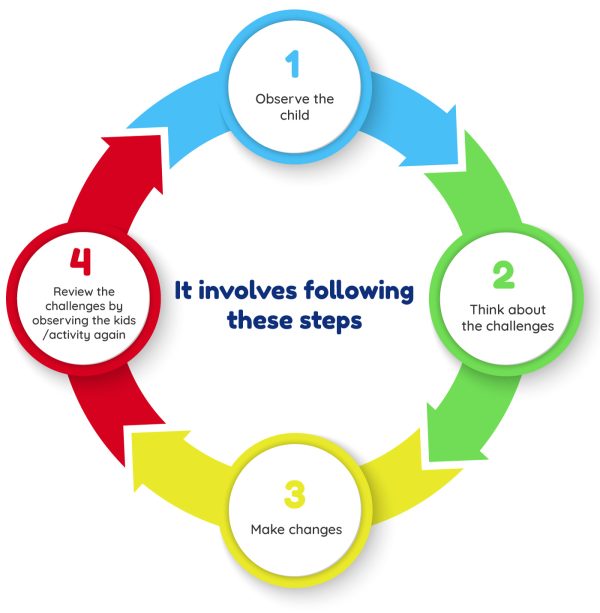CHANGE IT
Coaching Approach
What is the CHANGE IT approach?
The CHANGE IT approach helps coaches think about their communication style and how to modify an activity to meet the individual needs of a child.
When do I need to CHANGE IT?
Use the CHANGE IT approach when:
- Some kids don’t understand the activity or aren’t having fun
- Some kids are not engaged or participating in the activities
- Some kids may not be able to do an activity safely
- The challenge is too big, too small, or not even between kids of varying abilities
- The purpose of the activity is not being achieved
Coaching
- Be a player centred coach – modify the way you coach based on what each child needs.
- Give information in multiple ways – spoken instructions, pictures, videos, demonstration, modelling, buddies, feedback
How to score
- Change how the game is scored to include all kids. You can make the activity easier or harder by changing how it is scored. Participation is more important than who wins!
Area
- Change where the game is played to include all kids. Think about playing indoors or outdoors, the playing surface for kids with mobility aids, or making the area safe with fences (e.g., indoors/outdoors?). Make the area safe (e.g., fences, gates).
Number of players
- Some kids might need to work in small groups
- Choose the groups so no one is left out
- Match groups on skill level
- Even out teams using ‘reverse inclusion’ (see ‘Game Rules’).
Game rules
- Change the activity not the child. Change the rules to make it easier or harder, and to keep it interesting
- Try ‘reverse inclusion’ – e.g., have all kids play with blindfolds so they learn what it’s like to play with low vision
Equipment
- Modify equipment to suit kids of all abilities – e.g., use a brightly coloured ball, attach a bell to the ball, use a bigger or smaller ball
- Kids can bring their own equipment (e.g., gloves, modified ball)
Inclusion
- Be flexible and creative to include all kids
- Modify the activity and the equipment, not the child
- If unsure, ask the child or their parent how things can be changed to be as inclusive as possible. Parents and buddies can help.
Time
- Allow extra time to teach and practice new skills
Some kids might need activities to be shortened - Give a child a break if they are feeling tired, overwhelmed, or stressed




